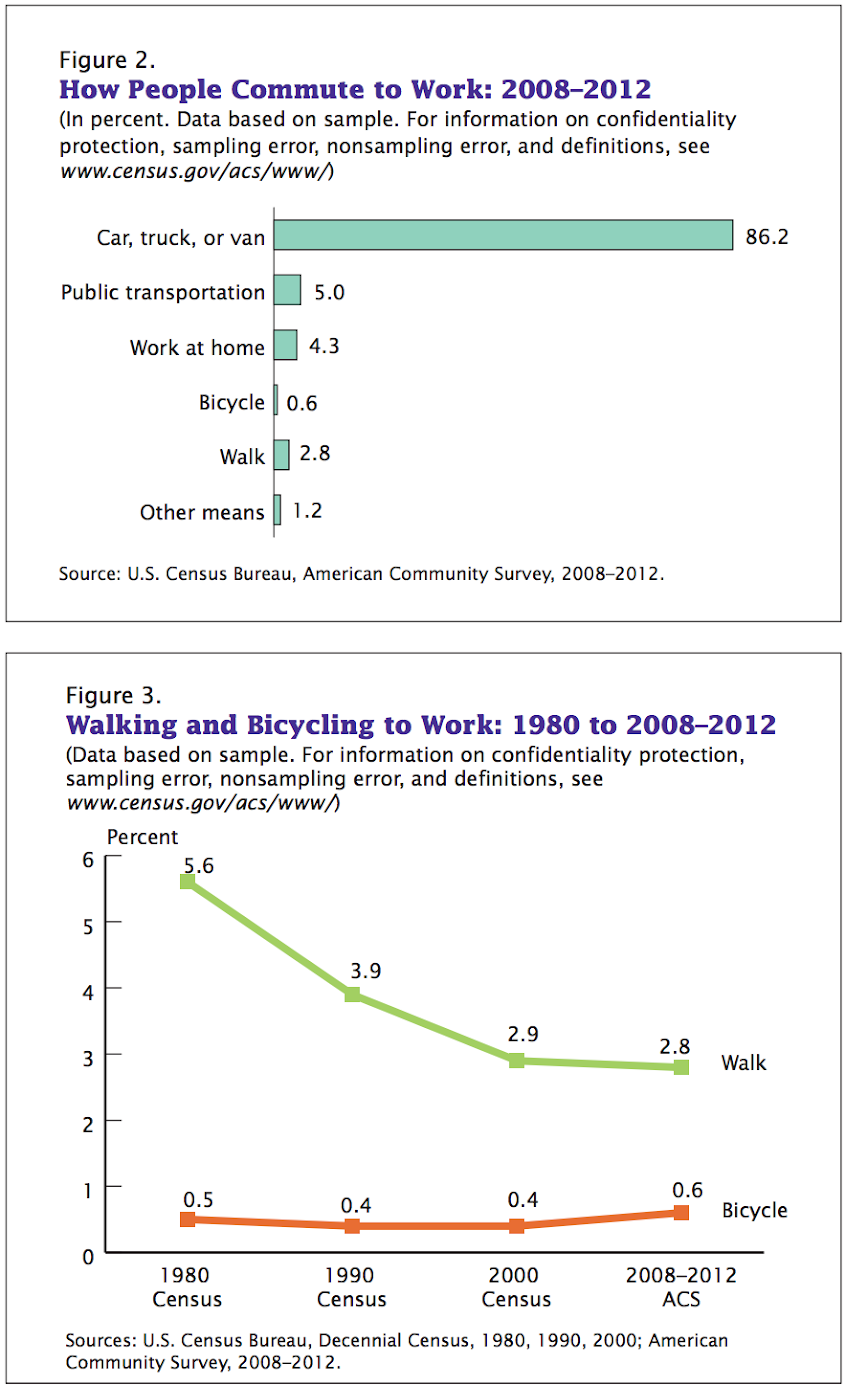Here’s the full report from the census department.
http://www.census.gov/prod/2014pubs/acs-25.pdf
My conclusions from the data:
Women walk to work as frequently as men, but bike 1/3 as frequently as men.
Blacks bike half as much as other races (no such difference for walking).
Poor people walk and bike at much higher rates than the rich.
Biking and walking is 2-3 times as common among the young as among the old.
The distribution with education is U-shaped: bicycling is 2-3 times as common among those at the top (with graduate degrees) and those at the bottom (lacking a high school diploma) compared to those in the middle (with just a high school diploma).
Average commute times for walkers are 12 minutes, 20 for cyclists and 26 for all others who did not work at home (drivers and public transit users).
For walking, the three large cities with the highest rates are Boston (15% are walkers), Washington DC (12%) and Pittsburgh (11%). The small city with the most walkers is Ithaca, NY (42%). For cycling, the large cities with the highest rates are Portland, OR (6%), Madison, WI (5%), and Minneapolis (4%). The small city with the highest rate of cycling is Davis, CA (19%).
It’s interesting how walking is declining, and cycling was declining, but has started to rebound:


2014-05-12 11:52:05
